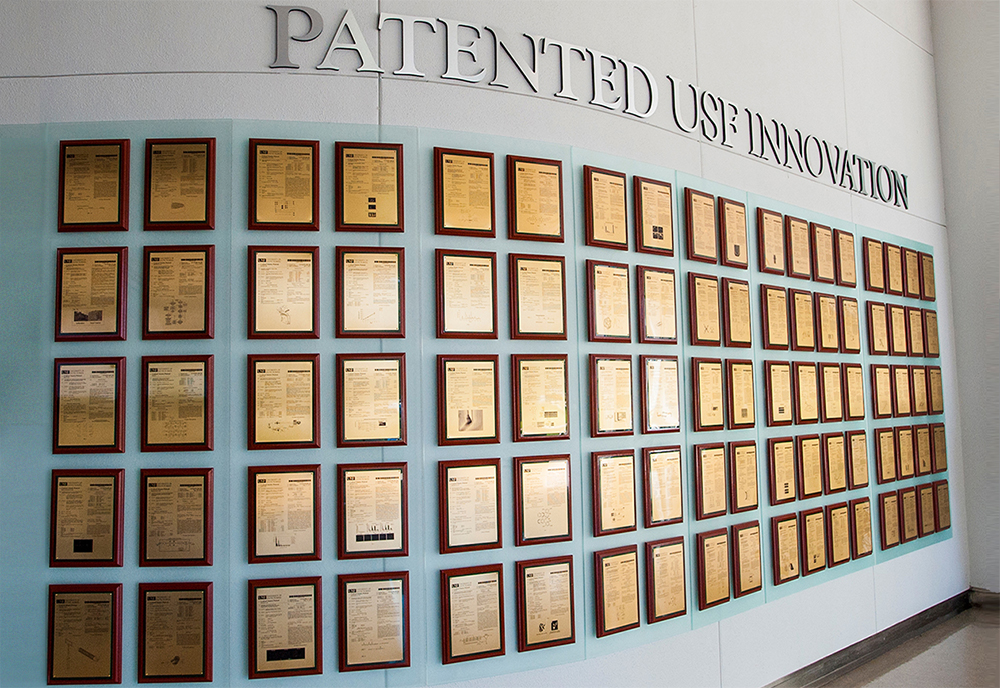The University of South Florida continues to stand with the world’s top universities in producing new U.S. utility patents, according to a new ranking released today by the National Academy of Inventors and the Intellectual Property Owners Association.
Based on the 92 new patents secured during the 2021 calendar year, USF is 11th among American public research universities and 23rd among all universities worldwide in generating new patents. On a global scale, this is the 10th year USF has ranked in the top 25.
“Solving global problems is at the heart of what we do at the University of South Florida, and our recognition as a leader in U.S. patent production reflects our commitment to this work,” USF President Rhea Law said. “We are proud of USF’s culture of supporting entrepreneurship and the transformational ideas of our faculty researchers and students. This work is vital to supporting the Tampa Bay region’s competitiveness in the global innovation economy.”
The ranking places USF in rare company among the academic institutions generating new, novel and useful inventions — including innovation powerhouses such as the University of California System, Massachusetts Institute of Technology, Harvard University and Stanford University.
The Top 100 Worldwide Universities Granted U.S. Utility Patents in 2021 report from the National Academy of Inventors and Intellectual Property Owners Association uses data from the U.S. Patent and Trademark Office in the previous calendar year and highlights the vital role patents play in not only university research and innovation, but in the global knowledge economy. Since the NAI/IPO began publishing its ranking in 2013, USF has been among the top 15 U.S. public universities and top 25 universities worldwide. The full report can be found here.
Here are some of the highlights of USF’s 2021 patents:
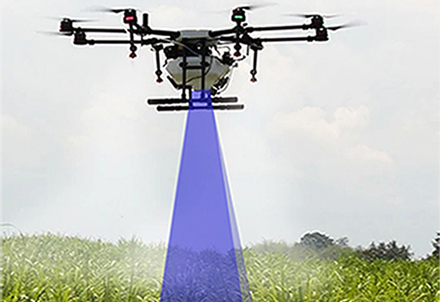
Invention of a drone and artificial intelligence-enabled system for mosquito surveillance
Dr. Sriram Chellappan, a professor in the Department of Computer Science and Engineering at USF, was awarded multiple patents in 2021 involving image processing techniques to classify mosquitoes. Mosquito-borne diseases are amongst some of the most critical public health concerns. More than a million people die each year mainly from malaria, dengue, chikungunya and more that are all spread by mosquitoes. To combat the spread of malaria in developing regions such as sub-Saharan Africa, Chellappan played an important part in developing drone mapping technology to locate habitats of malaria spreading mosquitoes.
Working with colleagues at the USF College of Public Health, Chellappan and his research team developed a system that would automatically detect sources of disease-carrying mosquito habitats from drone videos taken in sub-Saharan Africa. The information is fed back in real-time to local public health officials to eradicate the habitats. The system is the foundation for the startup Digitomy, LLC, which is engaging with local mosquito control boards in Florida as well as the authorities in India and Brazil. The project has received grant support from the National Science Foundation.
Earlier this year, USF College of Public Health research assistant professor Dr. Benjamin Jacob initiated a project to tackle malaria by encouraging local inhabitants in Uganda to seek and destroy breeding habitats, before the larvae become adults. To make this project a success, Chellappan’s expertise in AI and drones played an integral part.
Chellappan’s team has also been working closely with Dr. Ryan Carney, assistant professor of integrative biology at USF. Carney and his team launched a mosquito-tracking dashboard driven by citizen science — a scalable solution proven effective in a recent USF study. “This dashboard represents a unification of global citizen science platforms for mosquito surveillance and control,” said principal investigator Carney. “This tool will help mosquito control personnel to seek and destroy invasive species and monitor disease vectors on an international basis by leveraging the geo-reference computers people carry around in their pockets every day: their smartphones.”

Swerving prevention method prompts new patent for USF engineers
Researchers at the University of South Florida Center for Urban Transportation Research have been awarded a U.S. patent for an algorithm that detects one of the greatest roadway hazards — swerving. The algorithm spots roadway objects and where they’re causing connected vehicles to swerve. By studying swerving, this research could lead to cleaner, safer roads. The technology, if implemented on a wider scale, could reduce the rate of accidents, and help traffic flow more efficiently.
Dr. Sisinnio Concas, program director of Autonomous-Connected Mobility Evaluation at USF, has been working on the Tampa Hillsborough Expressway Authority Connected Vehicle Pilot, which launched in 2015. As part of the $22 million project funded by the U.S. Department of Transportation, more than 1,000 drivers volunteered to have their personal vehicles retrofitted with connected vehicle (CV) technology, allowing their vehicles to wirelessly communicate to roadside infrastructure and exchange information on traffic and other hazards that could affect pedestrian, vehicle and bicycle safety.
Through data evaluation, Concas and his team designed an algorithm that detects unwanted objects in the road and where they’re causing connected vehicles to swerve. This data can be transmitted to traffic monitoring centers in real-time up to 10 times per second — which would allow dispatchers to rapidly deploy the proper agency — such as transportation departments for debris removal and emergency responders in the case of a car crash.
Researchers have been working with Honda, Hyundai and Toyota to test how the CV technology interacts with their hardware. They’ve been looking at a number of features, such as forward collision and red-light violation warnings, wrong-way entry and end of ramp deceleration warnings. Concas hopes the auto manufacturers will consider incorporating his patented algorithm into their vehicles.
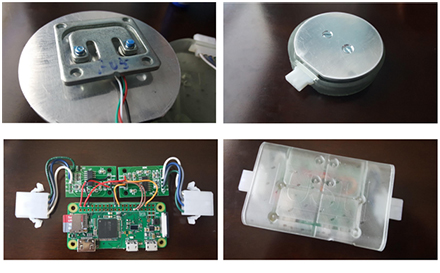
USF researchers have developed a wireless sensor system which continuously and passively monitors presence and weight of a person in bed, on a couch, chair or similar furniture that could have great potential impact on users’ quality of life comparable to current sensor systems on the market. Having the independence and dignity of living at home, as well as a comfortable place for family to visit, can provide emotional benefits to senior adults, and is an important factor for maintaining one's quality of life. However, some senior adults must have their activities monitored on a full-time basis due to health or other reasons. This can provide peace of mind for the family members and can be lifesaving in the event of an emergency. For those who cannot afford a full-time live-at-home nurse, a monitoring system is a more affordable alternative to help monitor activity and health in the home environment.
The five-person research team includes UF Precision Health Research Center Director Carla Vandeweerd, USF industrial engineering professor Ali Yalcin, USF mechanical engineering professor Autar Kaw, and USF mechanical engineering alums Carlos Pena and Reese Starowesky.
The patented device is broken up into three main components: sensor units, communication cables and a center control unit. The at-home monitoring system includes a sensor unit placed under a leg of a piece of furniture. The sensor unit measures the force imposed by the leg and a central controller receives the force data to determine when an individual gets on and off the piece of furniture and to determine the weight of the individual. A communications component wirelessly transmits this information to a separate computing device.
Following the team’s obtaining a patent for their device, they hope that potential licensing will lead to the possibility of the device being brought to market. Kaw said the team has already been in talks with an international hospital bed manufacturer that may wish to create a bed model with some form of the teams’ device built into it.
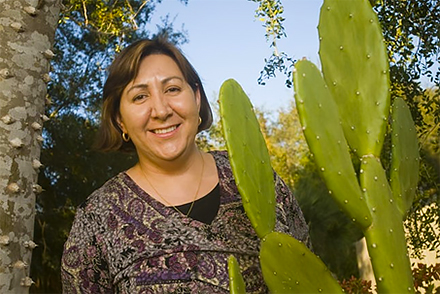
An invention to treat amyloid diseases with cactus mucilage
Norma Alcantar, a professor of Chemical, Biomedical & Materials Engineering at USF, was recently inducted into the Florida Inventors Hall of Fame. Alcantar holds 22 patents, many of which involve cactus mucilage. In 2021, Alcantar was awarded a U.S. patent for an invention that uses cactus mucilage extracts to slow the progression of amyloid neuronal diseases, such as Alzheimer's and Parkinson's. The cactus mucilage extracts come from the Opuntia ficus-indicia (also known as prickly pear or nopal cactus) and can inhibit the formation of amyloid b-protein fibrils.
Alzheimer's disease is a neurodegenerative disorder and is the primary cause of senile dementia worldwide. It is characterized by the presence of dense bundles of unusual fibrils within the cerebral cortex and hippocampus, termed senile or amyloid plaques. These amyloid plaques consist of large numbers of fibrils that are made up primarily of amyloid beta (A.beta.) peptides. The cactus mucilage extracts were found to induce changes in the secondary structures of the amyloid beta peptides thus interfering with formation of A.beta. fibrils and aggregation of A.beta. fibrils into plaques. The plant mucilage extract can be administered to the central nervous system of the patient, in some embodiments through a pump implanted in the patient.
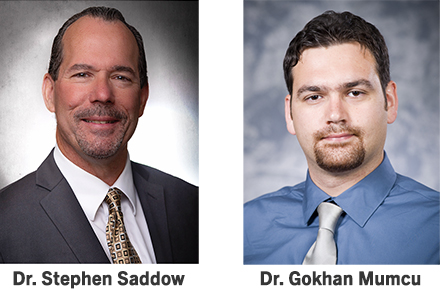
Stephen Saddow has invented a system and method for non-invasive blood glucose monitoring
This invention allows for continuous glucose monitoring (CGM) of blood in a blood vessel of a patient using a non-invasive sensor composed of a patch antenna operating in the Industrial, Scientific and Medical (ISM) Radio band. Dr. Saddow is a professor in the Department of Electrical Engineering as well as the Department of Medical Engineering, an interdisciplinary collaboration between USF’s College of Engineering and the Morsani College of Medicine. The co-inventor is Dr. Gokhan Mumcu, a professor in the USF Department of Electrical Engineering.
Maintaining a healthy glucose level is essential in a person's life. Diabetes Mellitus is a metabolic disease in which the body is unable to produce or properly use insulin, leading to elevated glucose levels in the blood, known as hyperglycemia. The American Diabetes Association estimates that nearly 10% of the population in the United States has diabetes and that, by 2050, 1 in 3 Americans will have diabetes.
This device determines the blood glucose concentration of the blood in the blood vessel based on the measured shift of the resonant frequency of the non-invasive antenna patch sensor. A radio frequency (RF) synthesizer is used to drive the patch antenna with a fraction of its output coupled to both the antenna and receiver through a directional coupler. In this approach both the transmitted (FWD) and received (REV) power are processed, by demodulating logarithmic amplifiers, which convert the RF signals to corresponding voltages for downstream processing. The resulting voltages are then fed into a microcontroller and the measured shift in resonant frequency is converted to a real-time glucose concentration.
There are two other patents related to this work: One is an implantable SiC biosensor that can remain functional in vivo for extended periods of time, much longer than current designs. Co-inventors on this patent include Dr. Mumcu and Dr. Sylvia Wilson Thomas, professor in the USF Department of Electrical Engineering. The other patent is a sensing continuous glucose monitoring system which includes an antenna that is permanently implanted subcutaneously. The system also includes a transmitting antenna positioned outside the patient's body that can detect changes in the blood glucose level by sending a radio signal at the frequency of the implanted passive antenna into the body. Changes in the glucose level lead to modifications in the signal and can be used to determine the blood glucose level externally.
